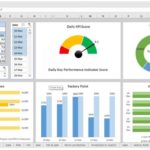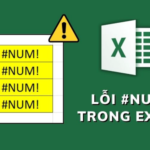CSV, or Comma-Separated Values, is a simple file format that uses commas to separate values. It is commonly used for storing small datasets such as contacts, class lists, or reports.
2. What is the structure of a CSV file?
A CSV file consists of multiple lines of values separated by commas. The first line typically contains the column headers, with each column separated by a comma (except for the first and last columns). Subsequent lines follow a similar structure, containing the corresponding values for each column. Each line in the file represents a separate row of data.

A CSV file opened in a text editor
3. What do CSV and Excel have in common?
Both CSV and Excel (.xls, .xlsx) are file formats used for storing tabular data. They can be opened using spreadsheet software such as Microsoft Excel, Google Sheets, Polaris Office, or Libre Office. Formulas and functions supported by these spreadsheet programs can be applied to both types of files when opened in the respective software.
4. What are the differences between CSV and Excel?
CSV and Excel are two formats designed for storing data in a database and facilitating data organization and filtering. Before delving into the differences, let’s define what Excel is.
What is Excel? Excel is a software application by Microsoft and part of the Microsoft Office suite. Released on September 30, 1985, Excel enables users to create and edit spreadsheets saved with the file extensions .xls or .xlsx.
Common applications of Excel include cell-based calculations, pivot tables, and various graphical tools. For instance, with an Excel spreadsheet, you can create monthly budgets, track business expenses, or organize and filter large amounts of data.

Now that we have a better understanding of what Excel is, let’s explore 12 differences between Excel and CSV:
4.1 Data Storage Capabilities
CSV files are simple text files that store data but do not support formatting, formulas, macros, etc. They are often referred to as flat files. On the other hand, Excel offers a wide range of features beyond data storage, including calculations, formula application, sorting, filtering, and more.
4.2 Charts and Images
Excel files can handle charts, images, and other visual elements in addition to numerical data. They offer a robust set of features for data visualization.

Excel supports charts, while CSV does not
CSV, being a simpler format, is limited to text, numbers, and basic characters. It cannot handle formatting such as date and time formats, currency symbols, bold or italic text, colored text, hyperlinks, text alignment, and so on.
4.3 Standardization
CSV files are simple text files without any standardization or structured format. In contrast, Excel files are highly standardized and structured to meet the diverse needs of modern businesses.
4.4 File Format
Excel saves files in its proprietary format with the extensions .xls or .xlsx. CSV, on the other hand, stores tabular data in a plain text file with values separated by commas, hence the name .csv.

4.5 Software Compatibility
Excel files can only be opened using Microsoft Excel or similar spreadsheet software. CSV files, due to their simplicity, can be opened with any text editor, including Notepad, and can also be imported into Excel.
4.6 Linking Capabilities
CSV files do not support hyperlinks to external data sources or dynamically updated data, whereas Excel offers seamless integration with external data sources and dynamic links.
4.7 File Size
CSV files are lightweight and occupy minimal storage space, even with large amounts of data. Excel files, especially those with complex formulas and extensive formatting, tend to be larger in size.
4.8 Applications

CSV files are primarily used for data analysis and facilitating programmatic manipulation of data. Excel, on the other hand, is used by a wide range of users, from students to business professionals, for various tasks, including data analysis, decision-making, and business forecasting. CSV files are sometimes used as a way to reduce the file size of an Excel spreadsheet.
4.9 Number of Rows
The number of rows in a CSV file is essentially unlimited due to its simple structure and lightweight nature. In contrast, the number of rows in an Excel file depends on the version of Excel being used. For example, MS Excel 2016 supports up to 1,048,576 rows.
4.10 Popularity and Usage
CSV files are commonly used by data analysts and software developers. Excel, on the other hand, is ubiquitous and used by individuals from various backgrounds, including students, office workers, and professionals in diverse fields.
4.11 Lighter File Size
CSV files are lightweight because they only contain plain text and simple values. They are considered flat files, similar to a standard text document, which contributes to their small file size compared to Excel files with equivalent data.
4.12 Simplified File Creation
The syntax of a CSV file is straightforward, allowing for quick data entry without the need to worry about font styles, colors, or other formatting concerns. In contrast, Excel files require the use of the Microsoft Excel application or similar spreadsheet software, and the speed of opening and editing files can depend on your computer’s hardware specifications. Additionally, Excel tends to consume more system resources due to its complex structure.
5. CSV files can be opened and edited with a text editor
In addition to spreadsheet software, CSV files can be opened and edited using text editors like Notepad. This feature offers convenience, especially on smartphones or devices where using spreadsheet software may be impractical.
6. Conclusion
In summary, this article has provided an overview of CSV and highlighted several differences between CSV and Excel. Understanding these distinctions can help users choose the most suitable format for their specific needs, especially when working with tabular data and programming applications.
Web design and development expert with over 15 years of experience. I’ve helped hundreds of businesses develop comprehensive web development strategies to create sustainable and profitable websites.
What is Excel Pivot? A Guide to Using Pivot Tables in Excel
Pivot Excel is an indispensable feature within Microsoft Excel that empowers users to create insightful reports with user-friendly tables and functions. It streamlines the reporting process, enabling you to effortlessly analyze and summarize large datasets to make informed decisions. Harness the potential of Pivot Excel today to elevate your reporting capabilities.






































